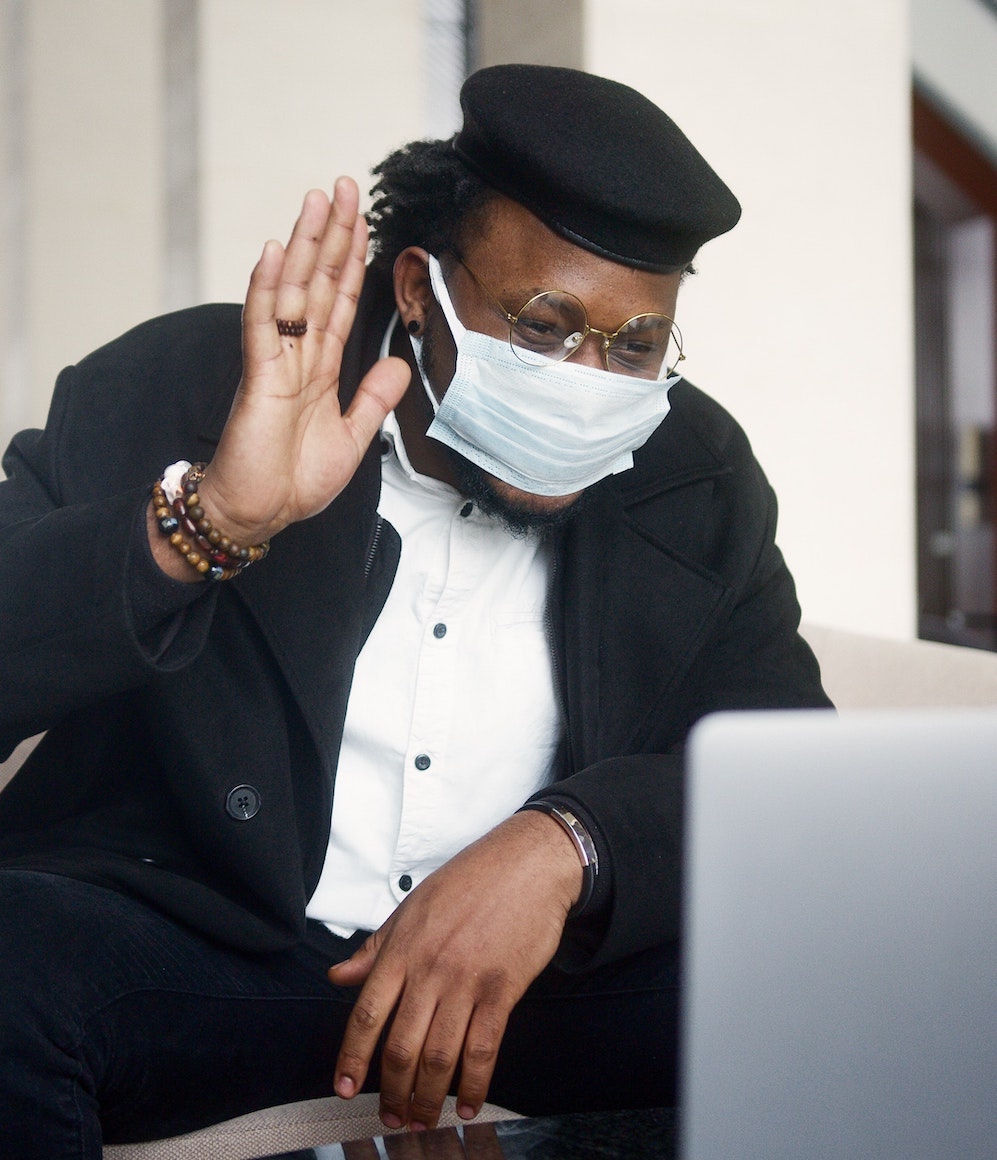If your psoriasis is mild, that’s good news. There are many treatment options, and for most people with mild psoriasis, it will stay mild.
Of course, “mild” is a subjective term. If you only have 1% of your body covered with psoriasis, but it is on your face, genitals, or the soles of your feet, that psoriasis may be anything but “mild” in terms of its impact on your well-being. The amount of psoriasis is only one factor, and its location on your body is another.
A third factor is what effects the psoriasis has on you. If it itches extensively, as psoriasis does for 70-90% of people who have it, even a little psoriasis can significantly impair sleeping or concentrating on work. If it cracks and bleeds often, that too is highly disruptive. And its impact on your psyche and sense of self is a major component not always determined by amount or location; it is intimately related to your own personality and the circumstances of your life.
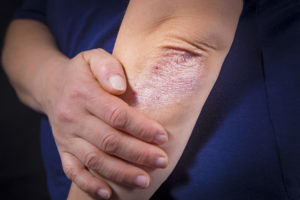
So we’ll leave it for you to decide if your psoriasis is mild. If rather than being mild, it is what is often called “moderate to severe,” then you have additional treatment options, including ones that have potentially more serious side effects, and that generally cost more. You can learn more about treatments for moderate to severe psoriasis here.
Those with moderate to severe psoriasis, meanwhile, will often use treatments discussed here to help them improve spots that are not responding to their primary treatment, or for specific areas such as the scalp.
Mild psoriasis treatments generally consist of topical creams, lotions, and ointments rubbed directly into the skin patches of psoriasis; ultraviolet (UV) lights directed at the psoriasis patches; shampoos for scalp psoriasis; and natural sunlight, if available.
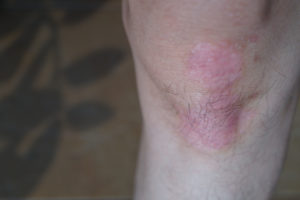
But it all begins with moisturizers: keep your skin moist and soft with inexpensive, nonprescription moisturizers that you like and are comfortable using. Moisturize after bathing and as needed throughout the day. Have some with you at work and in the car. And don’t go broke chasing exaggerated claims, especially since good old water (sometimes called “aqua” in the ingredient list to sound less like . . . water) and oil (or glycerin) are at the heart of most moisturizers.
Topical medicines
These are rubbed directly onto the areas with psoriasis. Be sure to use special caution when applying these to the face, genital area, or under folds of the skin. Also check with your health care provider before applying to places where the medication would be covered or enclosed – including under bandages or diapers – because this can increase the potency beyond what is advised for your psoriasis.
Steroids
Corticosteroid (steroid) creams and ointments are usually the first treatment used for mild (and often moderate) psoriasis. They have been around for decades and are safe if not overused. One topical steroid, hydrocortisone, is available over the counter (no prescription required) in a mild, 1% strength. But there are numerous varieties and strength levels of topical corticosteroids, which have traditionally been classified into seven categories, from “low potency” to “ultra high potency.” In most cases, the goal is to use the mildest steroid that will work effectively in resolving your psoriasis. After all, there is no such thing as a free lunch in this world: the stronger the steroid, the greater the risk for side effects, especially with consistent use over time. So if you can get by with the milder options, that is generally the safer bet.
When you are prescribed a topical steroid, get in the habit of asking where that product falls among the range of strengths available. If the product offered seems too mild or too strong for the job, ask for an explanation.
Steroids reduce inflammation and slow the rate of skin cell growth, making them very effective in reducing the flaking, itching, and redness (often more purple or brown on darker skin, or a deeper red) typical of psoriasis. But prolonged / excessive use can cause thinning of the affected skin, changes in the appearance / color of the skin, and can make blood vessels more visible. And if you were to use steroids on large areas of the body, or strong steroids for an extensive period of time, enough steroid could get into your system to put you at risk for potentially more serious side effects.
Usually, twice a day application, for a few days to 3-6 weeks, is enough to resolve mild psoriasis patches. If your use of steroids goes from days or weeks, to months, you should check in with your physician and make sure the treatment is not putting your skin or health at risk.
Treatment tip: Sometimes people report their steroid or other topical medicine is losing effectiveness, but there is research suggesting many of those complaints actually come after psoriasis patients start skipping doses or otherwise not following the doctor’s protocol. Try to adhere to your physician’s treatment plan as faithfully as possible; and if a twice or three-times daily application has been prescribed but is proving too burdensome to sustain given your busy life, let your health care provider know as there may be other treatment options with less frequent dosing available.
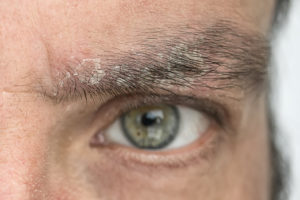
Once your psoriasis improves on topical steroids, your physician might work with you to find ways to keep your psoriasis at bay while limiting your total steroid exposure. This could include by moving to a milder steroid, or using them every other day. Since most problems with steroids come from overuse, misuse, or quitting cold turkey rather than weaning off of them, it is important to work with your health care provider in managing their use, even if you eventually find yourself with a drawerful of half-used tubes of various steroids prescribed over the years.
Non-steroid options that can be applied to the skin
While topical steroids are a “gold standard” psoriasis treatment, there are non-steroid creams and ointments that can be helpful as well, particularly if long use is required as well as for certain areas of the body where steroids can prove problematic. These medicines are often combined or alternated with steroids to reduce total steroid usage, and also because these agents have been found to work better in combination therapy.
One type of non-steroid proven to improve psoriasis symptoms is synthetic vitamin D: calcipotriene or calcipotriol (generic Dovonex; Sorilux Foam), and calcitriol (Vectical). These medicines take longer to show results (it could take four to six weeks), but are steroid-free and therefore sometimes used for longer periods than steroids can be used. In addition, Sorilux comes as a foam that can be used for the body or scalp, including for adolescents 12 and older. Side effects like burning, itching, and skin irritation occur in 10%-15% of patients (less often if you are able to keep the medicine off skin without psoriasis). Synthetic vitamin D (also known as vitamin D analogues) can also rarely (in less than 1% of patents) lead to a high level of calcium in your blood (hypercalcemia), which returns to normal after treatment is stopped.
Another non-steroid alternative is tazarotene, a vitamin A analogue (known as a retinoid) sold as Tazorac and as a generic. Tazarotene use has been limited due to common side effects, including itching, burning / stinging, and other irritation of the skin treated (especially skin that does not have psoriasis); as well as sun sensitivity, which can cause sunburn if not properly protected against. Another major concern of retinoids, whether applied directly to the skin or ingested in pill form (see treating moderate to severe psoriasis for more on those retinoids), is that they can cause devastating effects on the unborn child of a woman being treated with them. For that reason, tazarotene is generally to be avoided in women of child-bearing potential, unless there are compelling reasons to use a retinoid, and effective birth control is used throughout treatment (and for a period after treatment).
Combination therapy
One strategy to get the most out of both steroids and the vitamin D and A analogues, while minimizing the side effects of each, is through combination therapy: either alternating days between a steroid and one of the analogues discussed above, or using medicines that combine both into one product applied to the skin. Advantages of combination therapy include that the psoriasis patient enjoys the rapid improvement typically seen with topical steroids, along with the sustained benefit these other agents offer; while lessening the side effects of both individual products and extending the time that steroids can be used safely.
A popular combination includes a synthetic vitamin D (calcipotriol) and a topical steroid (betamethasone dipropionate). This combination has been shown to be more effective than either individual product, although its superiority to a steroid alone is fairly minimal, suggesting that particularly for short-term treatment, therapy with a generic topical steroid alone is probably sufficient (and substantially less expensive).
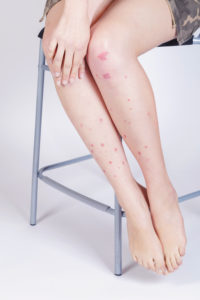
In one study that lasted a year, the two-product combination treatment showed significant effectiveness for the full year without major safety concerns, although 5% of patients did show the thinning of the skin (skin atrophy) that can come from excessive steroid use.
Taclonex is a brand of this combination that is US Food and Drug Administration (FDA) approved for plaque psoriasis of the scalp in patients 12 and older, and for plaque psoriasis of the body in patients 18 years and older. Enstilar is a foam formulation FDA-approved for plaque psoriasis of the body in patients 18 years and older. A third vitamin D analogue / steroid combination, Wynzora Cream, is pending before the FDA, with a decision expected by July 20, 2020.
There is also a steroid / retinoid combination called Duobrii Lotion (halobetasol propionate and tazarotene). This combination also extends the time you can safely use topical steroids, and remission can last several weeks after eight weeks of treatment. When symptoms reappear, you can use the product again. But while Duobrii lessens the risk of steroid side effects, it does not eliminate it, and the same warnings discussed above regarding tazarotene also apply to this combination product.
Other topical treatments
These options are proven, and safe, ways to help improve psoriasis symptoms, but don’t expect miracles.
Coal tar is often used in psoriasis shampoos (T/Gel and others), as it slows the growth of skin cells and reduces itching. It is safe and has been used for ages, but even after fragrance is added, many people find the odor unpleasant, and topical coal tar creams can stain fabrics.
Salicylic acid can help remove psoriasis scales. It is used in shampoos (T/Sal and others) and lotions, but some people find it irritates the skin.
Anthralin (used in Dritho-Creme and others) slows the growth of skin cells, improving psoriasis symptoms. It can sometimes irritate the skin, and it can leave dark stains on clothes and sheets. Anthralin is also known as dithranol.
Ultraviolet light therapy
Like topical steroids, ultraviolet light therapy (also known as phototherapy), is a mainstay of psoriasis treatment. Ultraviolet light produces multiple effects on human cells, reducing or eliminating psoriasis patches.
For many people, simply exposing psoriasis to sunlight can improve psoriasis symptoms. But don’t get a sunburn! That can make psoriasis worse and increases your risk of skin cancer.
There are also sources of ultraviolet (UV) light that psoriasis patients can access through a dermatologist’s office, or through home-UV light units that are often covered by health insurance.
While UV light therapy can sometimes be used for mild psoriasis, because it is more common as a treatment for moderate to severe psoriasis, we cover ultraviolet light therapy for psoriasis more fully in our examination of treatments for moderate to severe psoriasis and psoriatic arthritis.
Mild psoriasis does not have to be endured. There are many effective treatments to improve or clear mild psoriasis patches. The best place to start is with a visit to your family practice doctor or dermatologist. Good luck!
[Last updated 5-26-2020]


